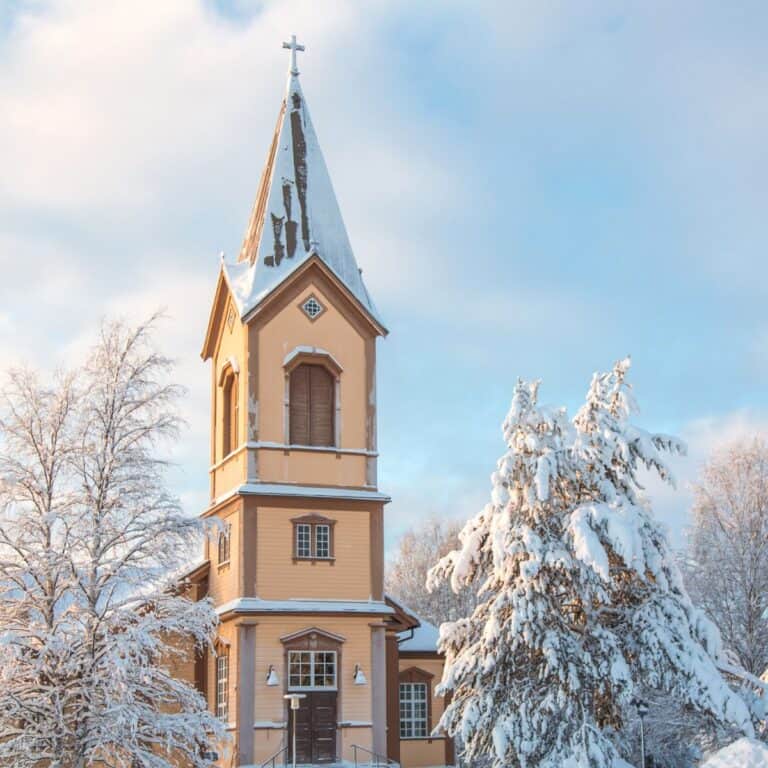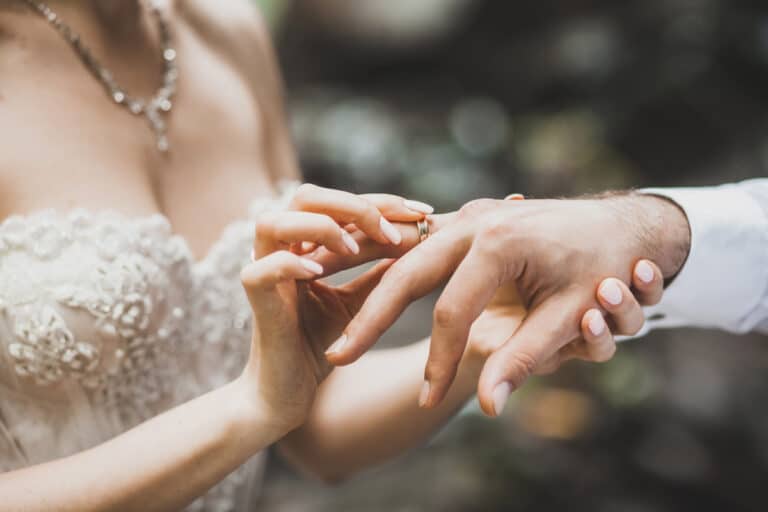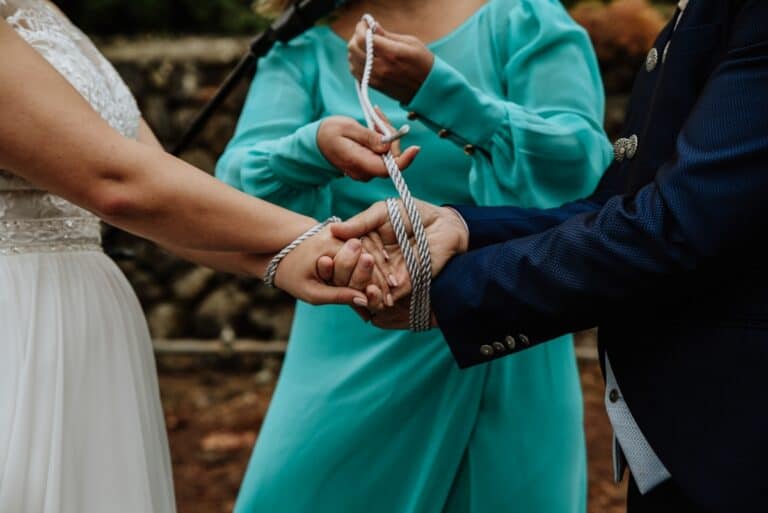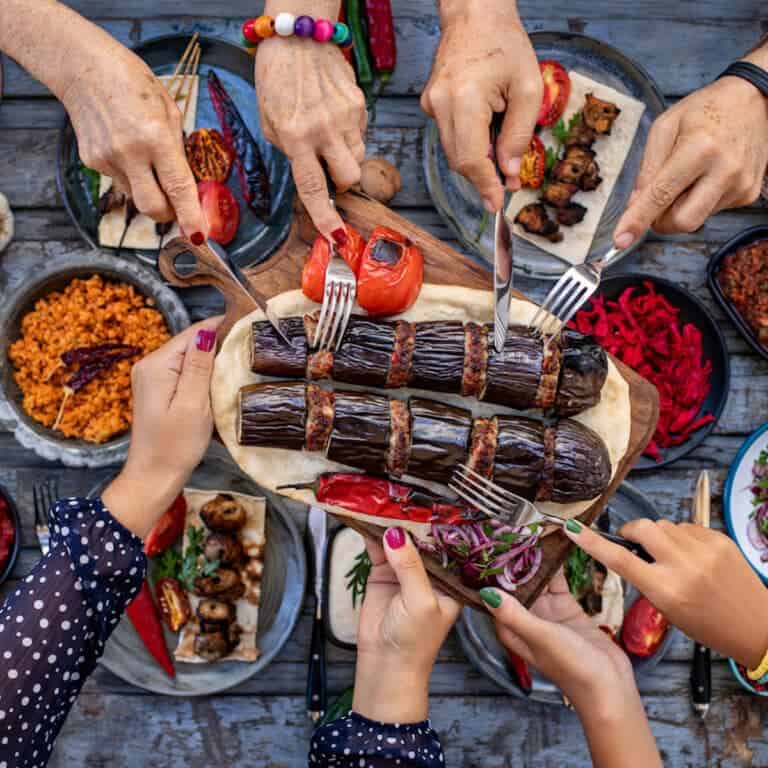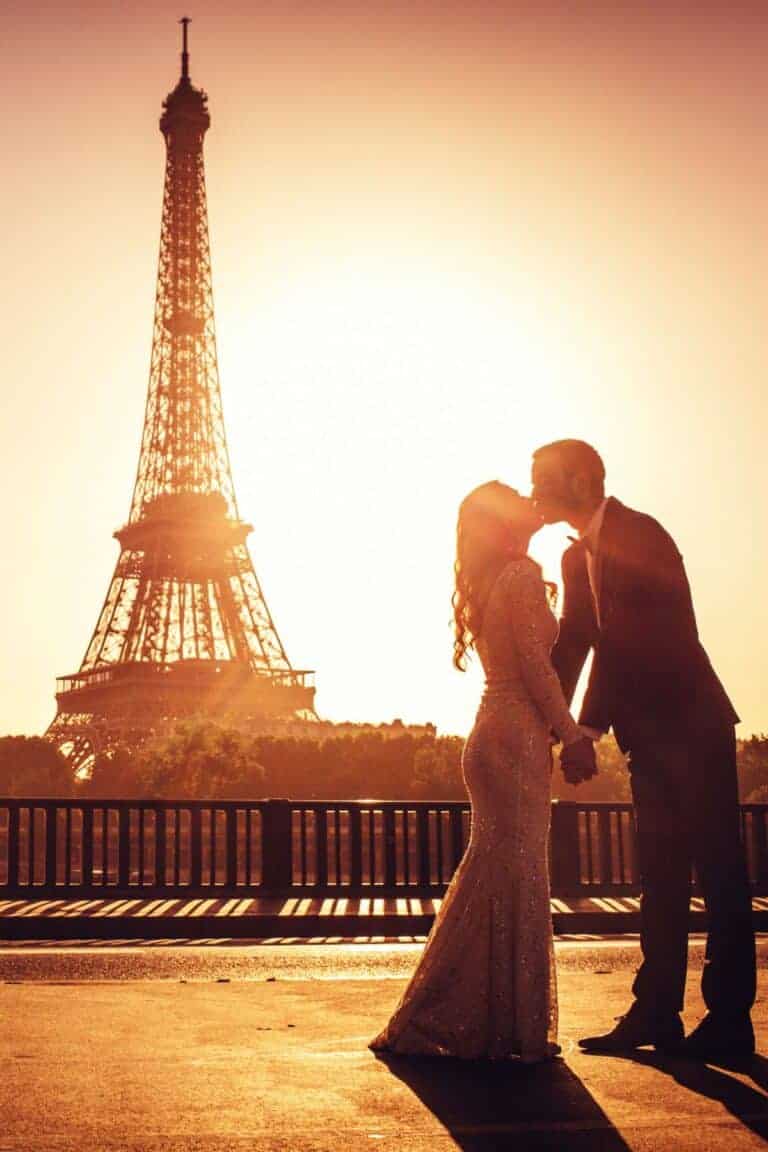Cambodian Wedding Traditions
Traditionally, Cambodian weddings unfold over three days and encompass eight different ceremonies. Each ritual symbolizes an aspect of the couple’s journey into marriage. The ceremonies don’t just honor the couple but also pay tribute to their families and ancestors. This post explores traditional Khmer weddings.

The Legend of Preah Thong and Neang Neak
Steeped in rich tradition and symbolism, Cambodian weddings typically span three days and three nights. This stems from the auspicious number ‘three’ found in the “Three Jewels” of Buddhism: the Buddha, the Sangha (brotherhood of monks), and the Dhamma (Buddha’s teachings). Many of these customs draw inspiration from the legendary union of the first Khmer prince, Preah Thong, and the Naga princess, Neang Neak.
Preah Thong, an Indian prince, voyaged eastward in search of his own realm. His journey led him to an uninhabited island teeming with flora and fauna. One full moon night, he encountered a group of people emerging from underwater – Princess Neang Neak and her entourage.
The prince and princess fell in love instantly, leading to a grand wedding celebration that lasted for three days and nights. The Naga King, Neang Neak’s father, then used his powers to form the land known today as Cambodia, bestowing it upon the newlyweds as a wedding gift.
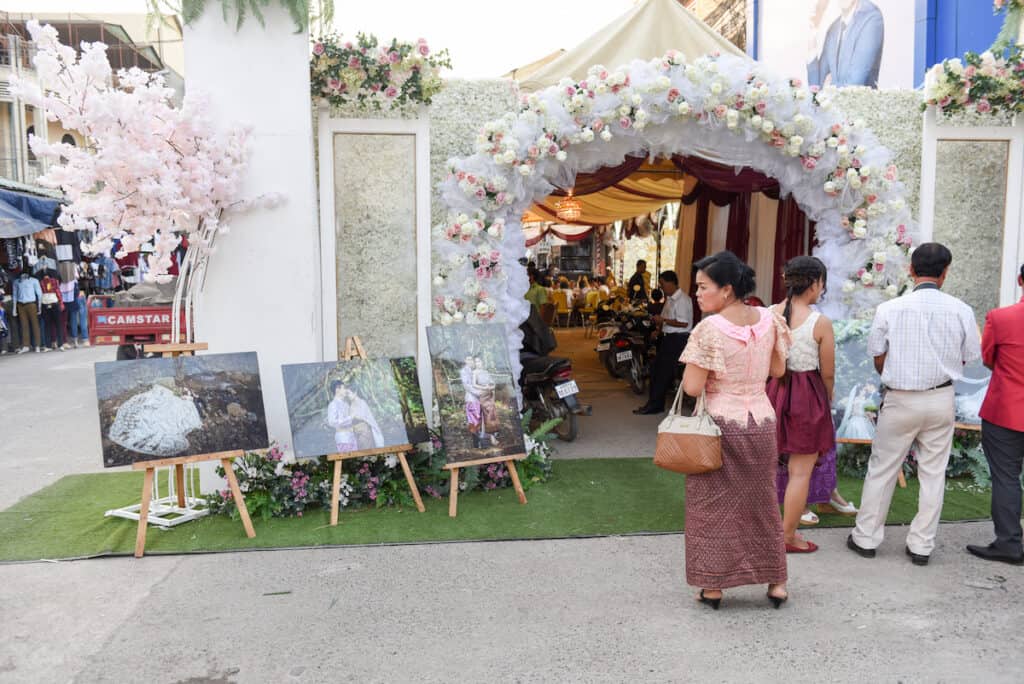
The Importance of Astrology
Astrology is interwoven in the fabric of Cambodian wedding traditions, playing a pivotal role in determining auspicious dates for significant life events like weddings. Horoscopes of the bride and groom are analyzed meticulously to ensure compatibility and harmonious life ahead.
The wedding date is cautiously selected, steering clear of any ‘unlucky days,’, particularly during the rainy season.
Traditional Khmer Wedding Ceremony
While a traditional wedding in Cambodia used to last three days and nights, modern families have shortened the event to one day and a half. Despite this, the essence of Cambodian culture and valuable traditions still hold a significant place in contemporary ceremonies.
The traditional Khmer wedding consists of stages spread over 3 days.
First day
Dowry ceremony: In Cambodia, a dowry is a payment or gift of money, property, or other valuables that are given to the parents of the bride by the groom or his family. The dowry is a way for the groom to show his respect for the bride’s family and to demonstrate his ability to provide for his new wife. It is also a way for the bride’s family to receive compensation for losing their daughter.
Soat Mun: A Buddhist monk give special blessings to the newlyweds during this solemn ceremony.
Bang Chhat Madaiy: This is for honoring the parents. The couple pays homage to their parents, thanking them for their sacrifices. They pass gift platters to each of them, bow three times for respect, and express gratitude and love. Symbolically holding an umbrella over their parents indicates the couple’s readiness to take on the role of their protectors.
Second day
Hai Goan Gomlom: The groom’s family arrives at the bride’s home bearing dowry gifts like meats, fruits, pastries, drinks, and desserts. The families exchange wedding rings during this ceremony, symbolizing the new relationship. This ceremony is a nod to past traditions where marriages were arranged, and the groom would travel to the bride’s house seeking her parents’ permission to marry.
Gaat Sah: The symbolic haircut ceremony represents a fresh start for the couple’s new life as husband and wife. The bride and groom’s hair is symbolically cut, and perfume is sprayed on them. Cambodians believe they are cutting away the past for a fresh, clean start as a married couple.
Sien Doan Taa: Before significant events, Cambodians pay homage to their ancestors. Known as the Tea Ceremony, the couple offers tea to honor the spirits of their ancestors, inviting them to partake in their significant life event.
Third day
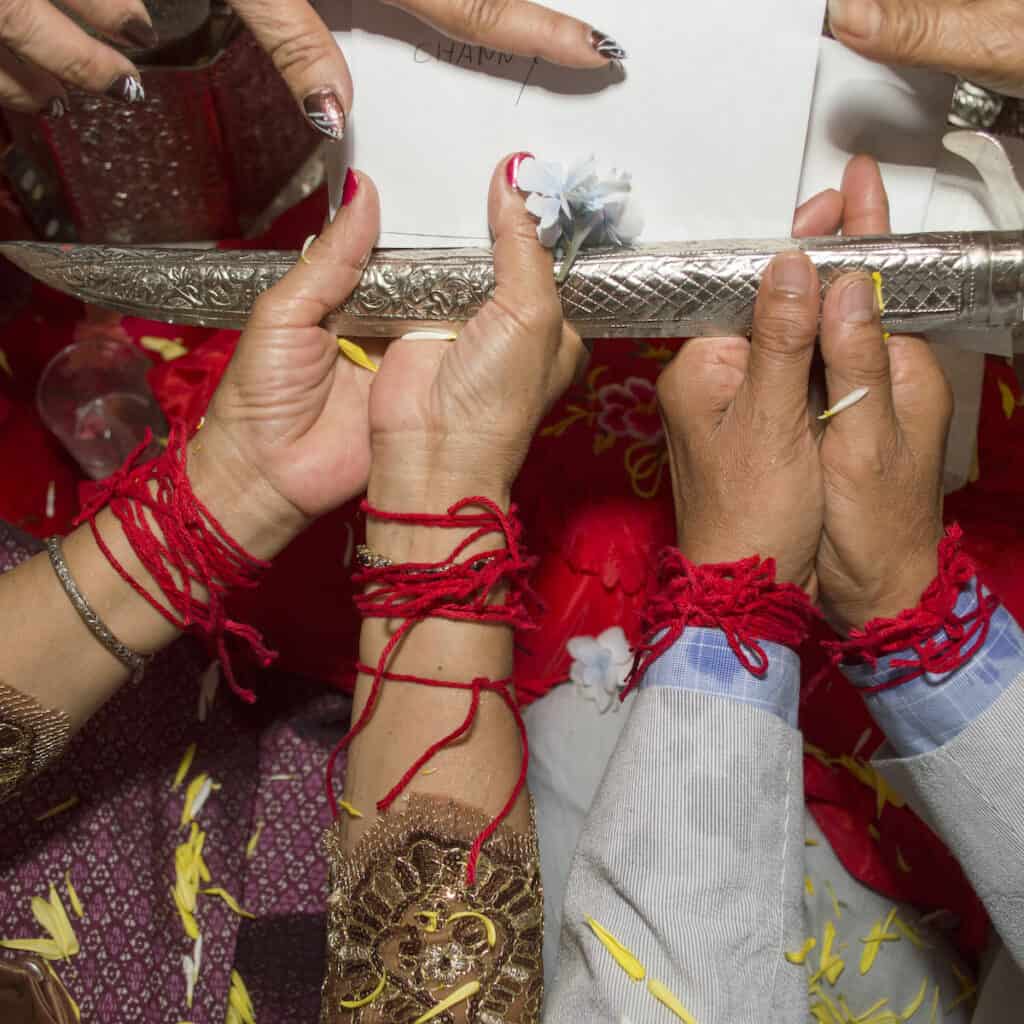
Sompeas Ptem: The knot-tying ceremony symbolizes the couple’s union. The groom holds a gold sword before the knot-tying ceremony, symbolizing his responsibility to protect his bride. The couple kneels down while holding the sheathed sword, then family members and friends tie red blessing strings around the bride and groom’s wrists. This knot represents the protection and safety that family members and guests wish for the couple.
Bongvul Pbopul (the seven circles of fire): Married couples circle the newlyweds, passing lit candles. The smoke of the sacred flame is guided over the bride and groom, shielding them from evils. During this ritual, four traditional songs are performed. The Phat Cheay initiates the ceremony as the bride and bridesmaids enter. The Kang Saeuy follows, accompanying the offering of gifts and blessings to ancestors and deceased relatives. The Bangvel Po Pil is played during the main ritual, where the couple makes seven rounds in the room, guided by the protective smoke from the candles believed to ward off evil spirits. The ceremony concludes with the Bay Khon Chang Dai, played as the couple’s wrists are tied together.
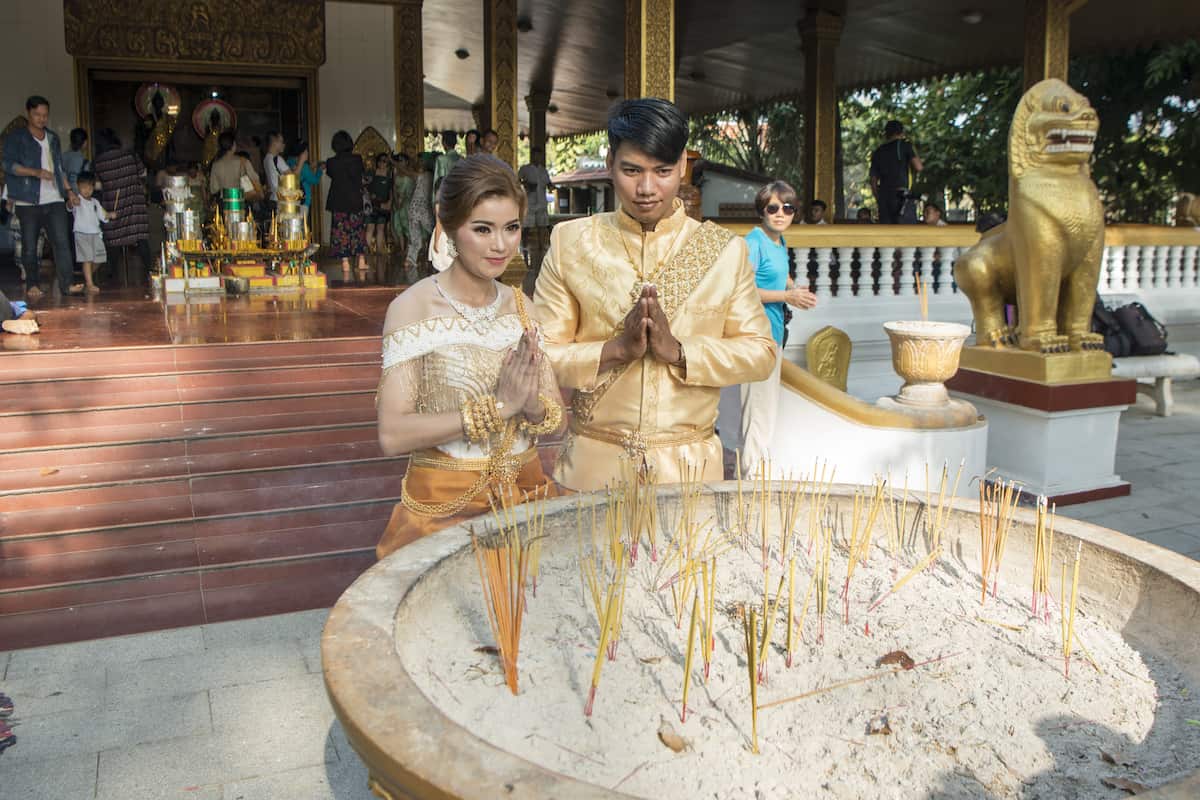
After the ceremony
At the end of the ceremony, guests shower the couple with white palm tree seeds as a final blessing. The couple circles the venue three times, signifying the groom’s protection and support throughout their marriage. The ceremony concludes with releasing birds, such as a dove or pigeon. They are seen as symbols of love and happiness.
Traditionally, the couple must wear the red silk strings around their wrists for at least three days to preserve good luck. On the third day, the couple’s parents can cut the red strings but must pray for the couple beforehand. The red strings can also be worn until they naturally fall off.
The vibrant ceremony concludes with a lavish wedding reception sit-down dinner featuring traditional dishes, songs, and dances.

Outfit changes
In a traditional Khmer wedding, the bride and groom change clothes throughout the day. The number of outfit changes can vary depending on the family’s wealth, social status, and the bride’s personal preferences. Traditionally they would change between each ceremony. The bride’s outfit is typically red, which is a symbol of love and happiness. The groom’s outfit is typically gold, which is a symbol of wealth and prosperity.
Food at Cambodian weddings
Traditional Cambodian weddings feature a delightful array of dishes that showcase the country’s rich culinary heritage. Here’s an overview of some traditional foods commonly served at Cambodian weddings.
- Crab soup – Authentic Cambodian crab soup holds a special place in wedding banquets and other big occasions. One variation of this soup is this white asparagus with crab meat soup, considered a delicacy. The traditional Khmer recipe typically calls for kdam-sre, a type of rice-field crab.
- Kari Sach Moan, or Chicken Red Curry – This is a flavorful Cambodian dish often served at weddings. This dish showcases the vibrant and aromatic flavors of Cambodian cuisine.
- Plea Sach Ko ( Lime-Marinated Beef Salad) – This refreshing and flavorful Cambodian dish often served at weddings and other festivities. It combines tender beef with a zesty lime dressing and herbs and vegetables.
- Fish Amok: Considered one of Cambodia’s national dishes, Fish Amok is a flavorful curry made with fish (often catfish) cooked in a coconut milk base. It is typically flavored with lemongrass, kaffir lime leaves, and galangal. The curry is served in banana leaf cups.
- Bai Cha: Cambodian Fried Rice is a popular and flavorful dish. It is a delicious combination of stir-fried rice, vegetables and often includes meat or seafood.
- Num Ansorm: Steamed cake is made primarily from sticky rice, coconut milk, and fillings. The cake is wrapped in banana leaves. The fillings can vary, but popular options include grated coconut, mung beans, black beans, or a mixture of these ingredients.

Traditional Cambodian weddings are a testament to the country’s cultural richness, offering an immersive experience into the heart of Cambodian customs and traditions. The numerous ceremonies, each filled with symbolic gestures and rituals, make the wedding a deeply personal and spiritual event, creating a memorable start for the young couple’s journey together.

